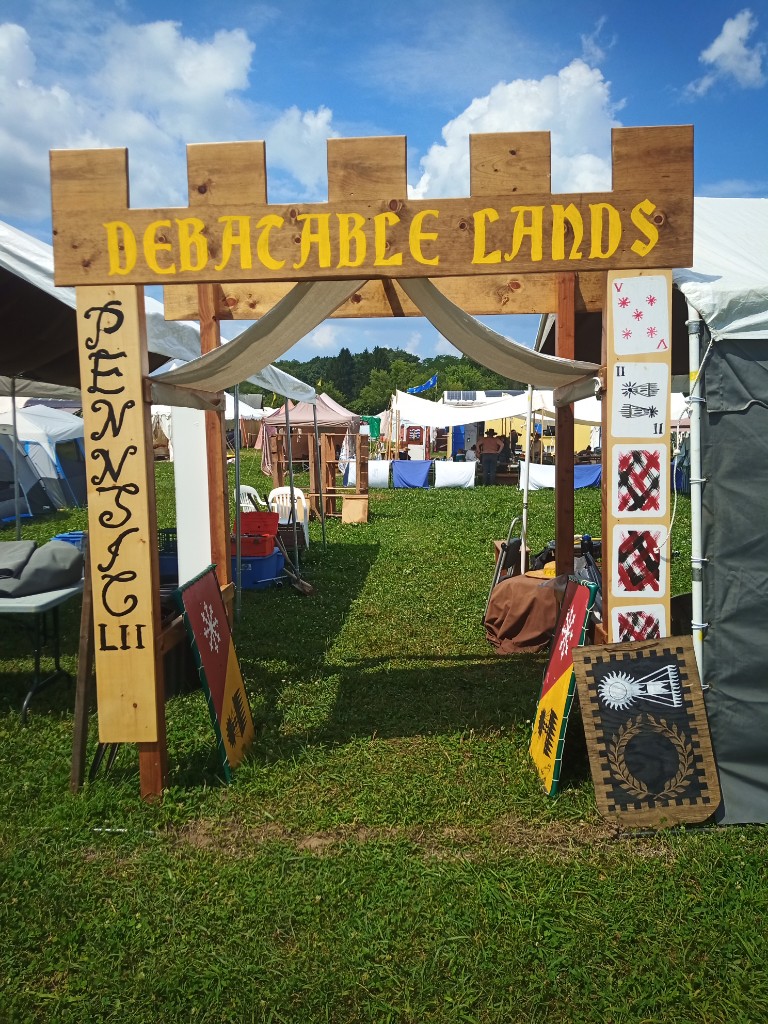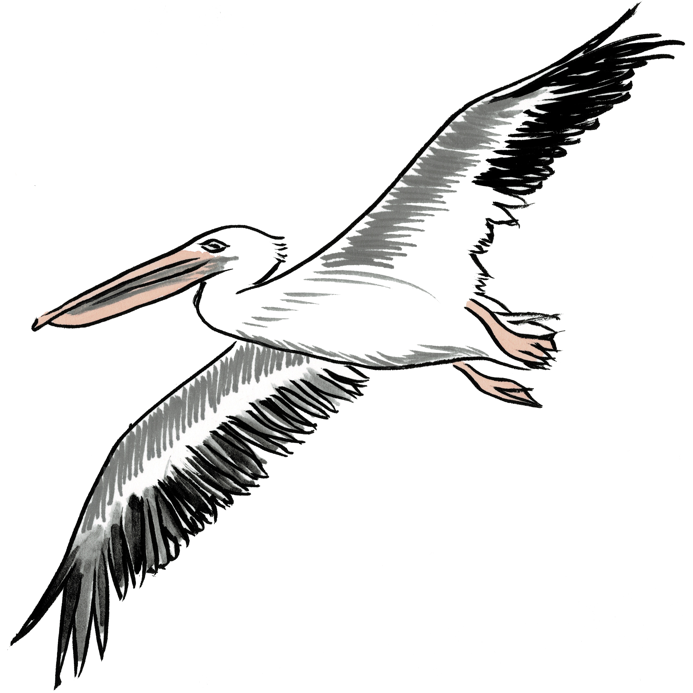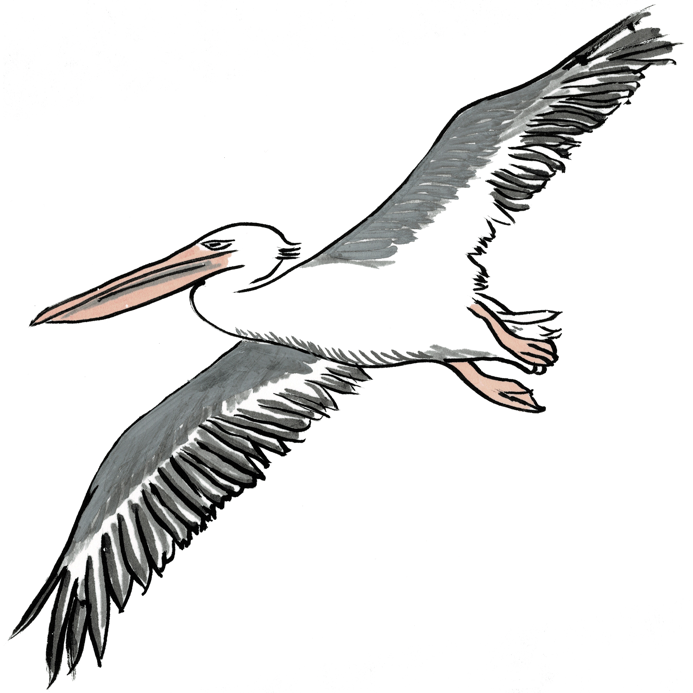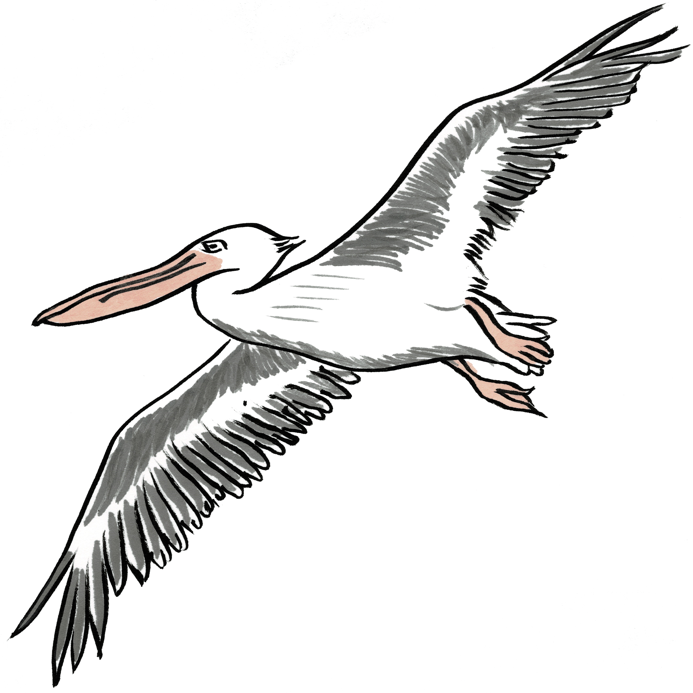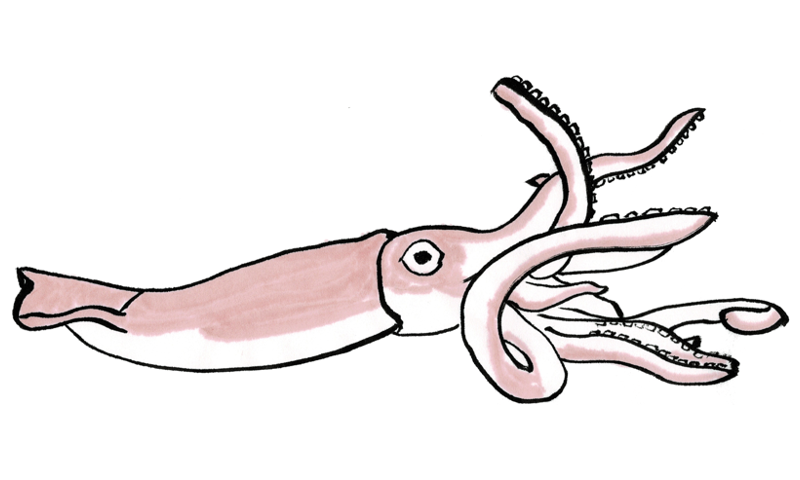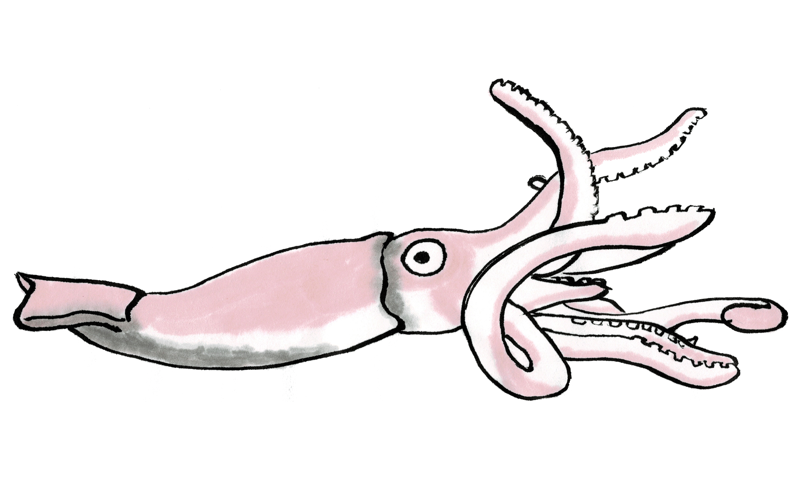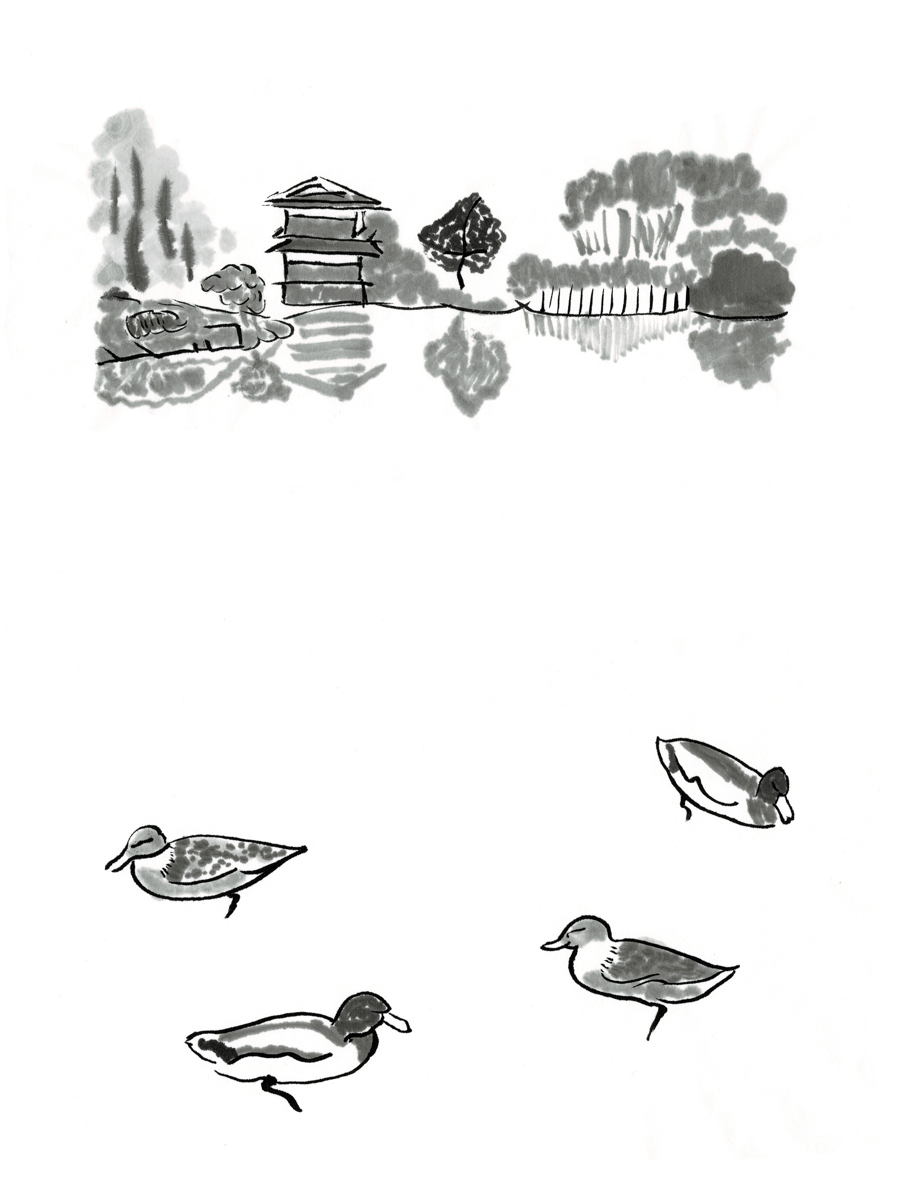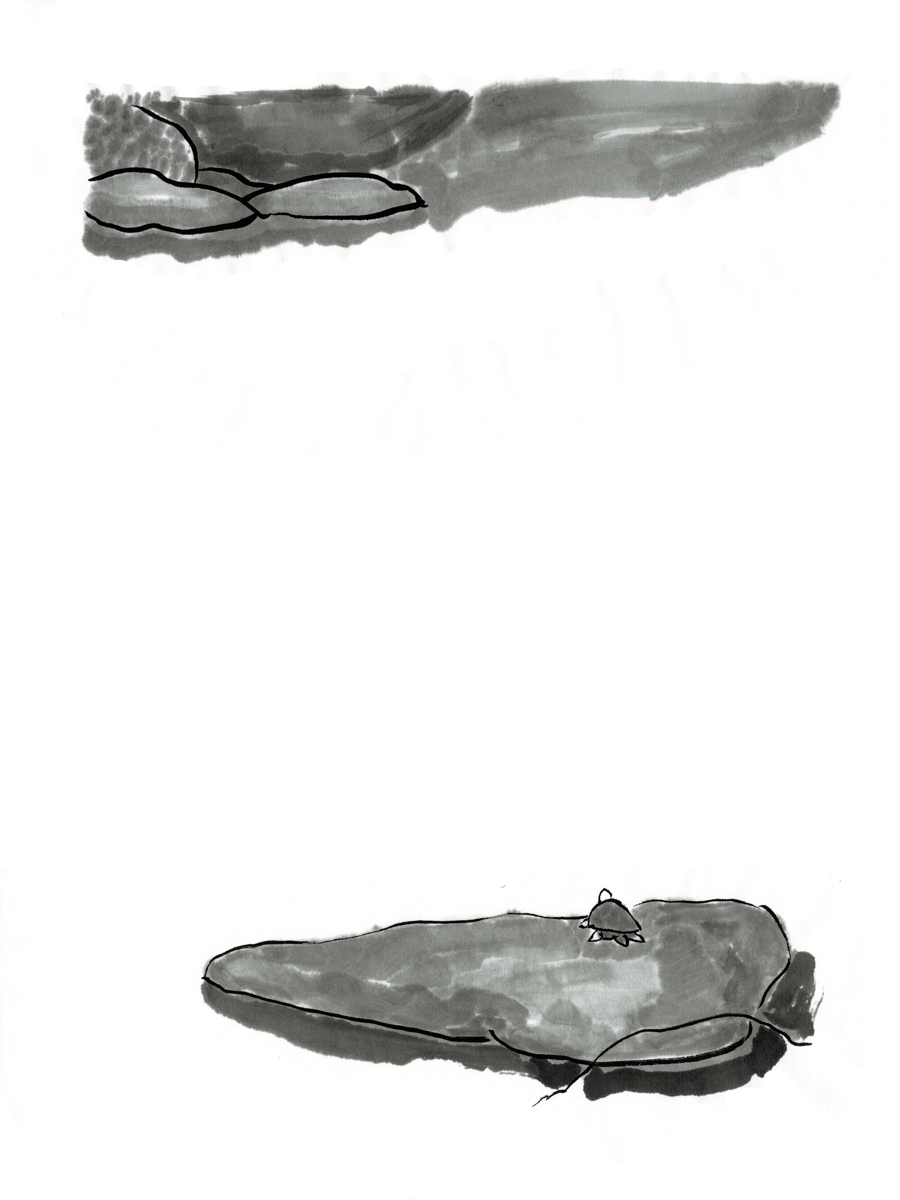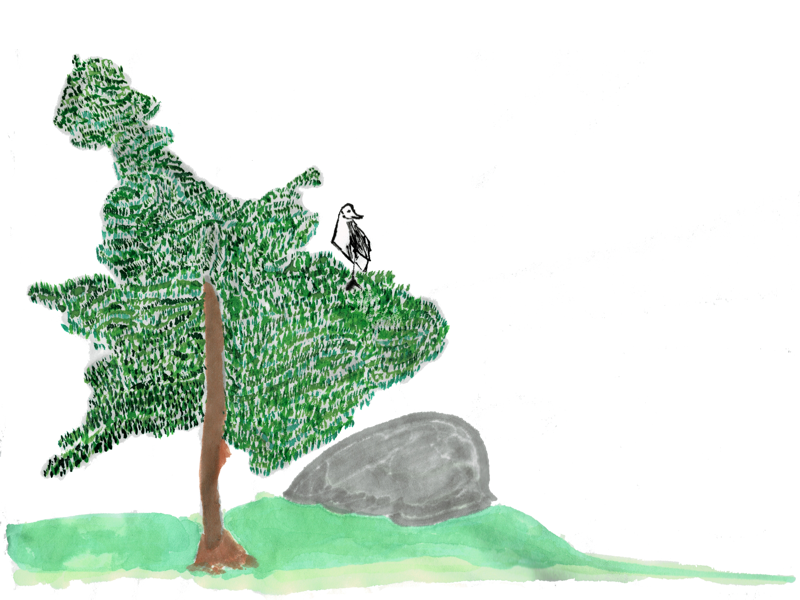Back before Pennsic, I was contacted by our local group’s “Signet” (person in charge of organizing scribes and illuminators to make award scrolls) about illustrating an award scroll for my Sweetie. She was receiving the highest award for service that our Barony gives, so I knew it had to be something she would really enjoy. That meant irises.
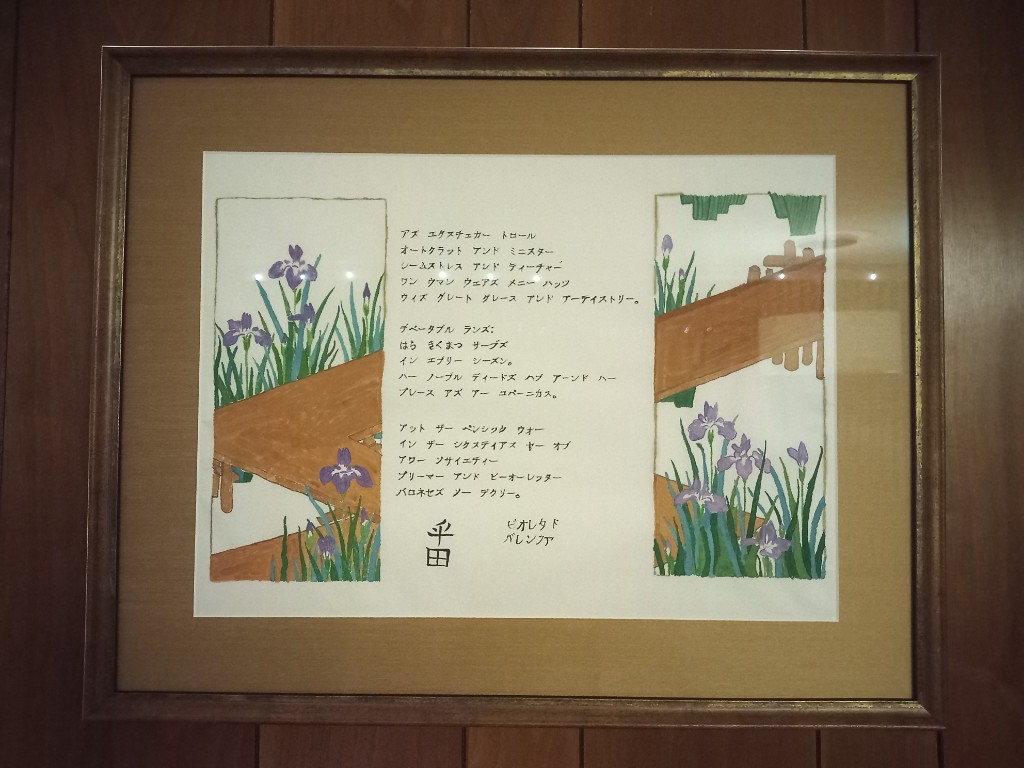
Traced from an image in Beyond Golden Clouds (Yale University Press, 2009), edited by Janice Katz, page 153. The original is a two-panel “oshie-bari byobu” painted screen, roughly 52” tall. The Sakai family owned several paintings by Ogata Korin, and Hoitsu seeks to imitate his master’s style here in a screen titled “Irises and Eight-fold Bridge”. The original screen uses a background of gold leaf squares to create the illusion of golden sunlight reflecting off the surface of the water. Irises take significant tending, but the work results in a multiplication of blooms over time. I chose to leave the background of this copy blank to suggest that there is always work left to be done.
I did a practice copy on some of my regular (affordable) hosho paper, then did this fair copy on a large piece of kozo paper. Sweetie loves it so much that she had it framed for display in her den.


